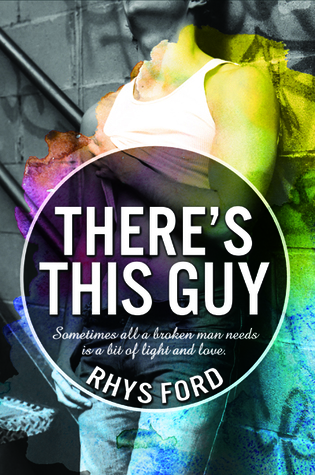This & That – Two Pesky Demonstrative Adjectives
This & That: Basic Grammar
One. Any grammar book will tell you this & that are demonstrative adjectives. ‘This’ indicates objects that are proximate, that is, ones near by. ‘That’ indicates objects that are removed, that is, ones far away.

Kindergarteners know these usages
Two. ‘This’ can also introduce a topic. Example:
“There’s this guy. He always comes five minutes late to yoga and disturbs everyone.”
‘This guy’ is not nearby in space. But he is front and center in the speaker’s mind, so he’s close by in thought.
Turns out, the common ‘there’s this guy’ phrase turns up as a book title.

Now that I’ve read the blurb for the book, I think I’m going to read it! Rhys Ford is a well-known writer of LGBTQ fiction.
Three. In addition to being a demonstrative adjective, ‘that’ has two more functions:
i) as a relative pronoun. It introduces a relative clause. Example:
“Here’s the book that the teacher assigned.”
ii) as a sentential (or clause) pronoun. It can refer back to an entire sentence (or part of a sentence). Example:
A: “I’ll pick you up at eight.”
B: “That sounds great.”
Beware of This & That!
If you use ‘this’ in any way other than for proximity or topicalization, you may be guilty of lazy writing. If you use ‘that’ in any way other than to indicate distance or as a pronominal, you may be guilty of lazy writing.
I’ve certainly been guilty of lazy writing. But once I became aware of the ‘this & that’ trap, I now double-check whenever these two pesky words pop up in my writing.
Let’s say I dash off a short passage:
“When Janet walked into the conference room, Charles looked away. Janet didn’t like this.” (Or alternatively: “Janet didn’t like that.”)
Question: What work is the ‘this’ (or the ‘that’) doing in the above sentence? Answer: Not much.
It’s not the reader’s job to guess what’s going on with Janet. It’s my job to portray it.
What are the possibilities?
“When Janet walked into the conference room, Charles looked away. Janet was incensed by this silent snub.”
“When Janet walked into the conference room, Charles looked away. Janet was instantly worried. If the news about their sales pitch had been good, he would have caught her eye.”
“When Janet walked into the conference room, Charles looked away. Janet was annoyed, because she had wasted no time in calling the meeting to order and Charles’s attention was already wandering.”
I hope you get the idea.
Does Your Writing Need a ‘That’ Diet?
Some years ago an editor said to me, “We need to put your story on a ‘that’ diet.”
I had never heard the term, but I instantly knew what she meant. Although all my uses of ‘that’ were grammatically correct, I was overusing them.
I can easily rewrite the sentences I gave as examples, above.
“Here’s the book the teacher assigned.” (No ‘that’ necessary.)
A: “I’ll pick you up at eight.”
B: “Sounds great.” (No ‘that’ necessary.)
Now I regularly do a ‘that’ check.
Once your ‘that & that’ antennae go up, you can easily correct lazy writing and avoid ‘that’ fat.
See: All My Writing Tips
If you want to learn how to write a novel, check out my complete guide for writing a book.
Categorised in: Blog, Writing, Writing Tips
This post was written by Julie Tetel Andresen
You may also like these stories:
- google+
- comment



